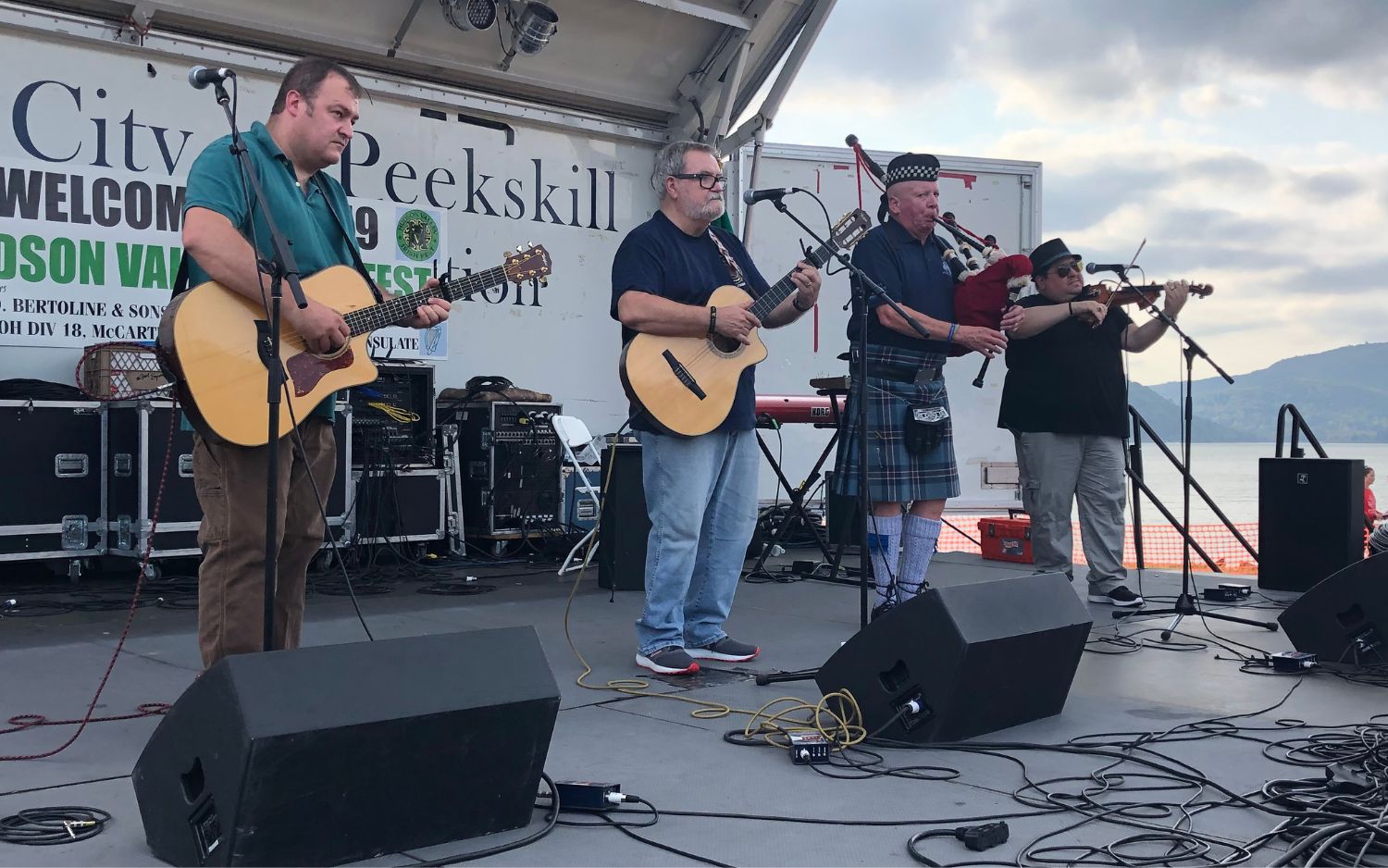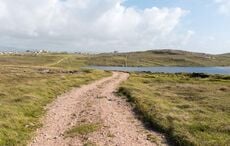|
The Delap Sisters Courtesy of the National Science & Engineering Plaques Committee |
Yesterday I took myself to the Natural History Museum (or, "the dead zoo,") on Merrion Street. The grand grey buildings felt a little out of place in the bustle and brick of the city center, looking more like London or Brussels than good old Dub. I walked past the entrance by accident and had to backtrack to find my way in, but that gave me time to admire all the little bushes trimmed into the shapes of animals prancing around the museum’s yard.
The ground floor, dedicated to Irish species, is tiled in red and black and is filled with freestanding dark wood and glass cases holding dozens of animals in each diorama. The first thing I noticed was the Giant Irish Deer. It was hard not to – the fossilized skeletons were enormous, with antlers about 4 meters across. I tried to picture these creatures walking across the Irish landscape and was bowled over.
But there were so many other things to look at, like something HUGE labeled “Sunfish” in one of the cases marked “Irish Fishes,” and a Basking Shark the size of a whale and looking a bit like a papier-mâché project suspended from the ceiling. The labels and tags looked like they’d been printed decades and decades ago – a few were even handwritten. It was easy to imagine women in long dresses and men in top hats strolling about – the place felt so nineteenth century. It was also a very short leap to picture everything coming alive. All the otters and deer and mice and hares and halibut and badgers and ducks and gulls having a rumble or a right old party. I was jolted out of such daydreams when a mammoth tour group of French and Italian high schoolers poured in, chattering. The sharp insistent “ssshhh!” that periodically came from the adults made it worse. It felt like a place meant to be silent.
Upstairs is the “Animals of the World” exhibit – a room set up a bit like an old library: one expansive space with rings of balconies around the walls. The floor was made of wide, creaky wooden boards. An eerie place, made to feel a bit more sinister by a toddler screaming as if for dear life. “NO NO NO NO! GO ‘WAY, GO ‘WAY!” She was just scared, but still it gave me chills – I found myself worrying she would upset the animals and they’d spring out of their cases.
| Inside Ireland's Natural History Museum (known as the "Dead Zoo") |
Probably my favorite find was a wardrobe of bats – spindly skeletons, or stuffed ones with tissue-papery wings. Tiny little skulls and miniature teeth. “Pangolins” were new to me: scaled anteater things that looked like they were from a different age. I also had never heard of “rat-kangaroos,” which look like exactly what they sound like, unfortunately. Most of the animals were mounted onto wooden boards which sat on shelves in the cases. Some of them wobbled on their mounts when you stepped nearby. When I pictured this upstairs exhibit coming to life, the image that came to mind was of all the animals sitting around playing cards…
There were so many more details that made the place captivating. A row of twelve gaping horse jaws, someone’s handprints in the dust under the Indian Elephant, a human skeleton held together with thick pieces of wire, and one particular label:
Skull of TRUE’S BEAKED WHALE, Mesoplodon mirus True, VALENTIA, Co. KERRY, Stranded 22 April 1935, Given by Miss Delap NMI 65.1935"
I think the word “True,” first caught my eye as being particularly poetic, but then as I read the whole label I tried to imagine how this piece of history played out. Who was Miss Delap and how did she end up with this stranded whale in her possession? How did she discover the whale, alone on the beach on Valentia? Did the community try to save it? Was it removed and kept somewhere? How did it get from Valentia to Merrian Street?
The Irish Whale and Dolphin Group has an inventory of past strandings, including the whale I saw in the museum (here). I learned that it was a male, and it was not a live stranding, with no successful refloat.
A search for “Miss Delap Valentia” brought me to a paper called “An Interesting Young Velella in the Plymouth Plankton,” by Marie V. Lebour, D. Sc. (Find it here.) It begins “On 2 February 1943, after some very fierce south-westerly storms, a curious object was found in the inshore plankton which proved to be the ‘float’ of a very young Valella in the Rataria stage. In order to be certain of its identity some small complete Valellas were compared. These were kindly sent by Miss Delap of Valentia, to whom I am much indebted.” This Miss Delap was evidently quite the marine biologist.
Some more poking around revealed her to be Maude Delap, described by one blogger as “Jellyfish Goddess of the North Atlantic.” From this blog and from a 2003 Irish Times article by Michael Viney, re-posted on the Irish Islands info website, I learned that Delap was born in Donegal in 1866 and moved to Valentia with her large family when her father, a reverend in the Church of Ireland, transferred to a parish there. She died on Valentia in 1953. It sounds like several family members were “keen naturalist[s],” and that they did some serious collecting and examining.
Delap is most known for successfully guiding jellyfish through their full life cycle in captivity. Her work was published in 1901 in The Irish Naturalist.
I found her article. It’s in Volume 10, no. 2 (February 1901) and is titled “Notes on the Rearing of Chrysaora Isosceles in an Aquarium.” (Read it here.) The article is four pages long and quite fun to read. Delap explains her success as if telling a story. “On June 21st, 1989, I picked up a damaged specimen of the jellyfish Chrysaora isosceles on the shore of Valentia Harbour, and placed it in an aquarium for examination,” she begins. Her language is technical and scientific, but her delight at her work is hard to miss. As was her dedication – she notes that she struggled to find enough food for the jellyfish “owing to the stormy state of the weather,” and that she checked the temperature of the water in the bell jar and compared it to the temperature of the sea outside.
I’m not the first to have discovered this cool scientist. There is a BBC podcast about her. An artist named Dorothy Cross made a film about her life, titled “Come into the Garden Maude,” (named after the Tennyson poem) as part of a larger work centered on jellyfish.
I sent an e-mail to the Natural History Museum asking if they had any information about Miss Delap and the whale. Mr Nigel T. Monaghan, (who has an amazing e-mail signature: “Keeper, Natural History Division, National Museum of Ireland,”) got back to me immediately:
“Miss Maude Delap (1866-1953) was a well known expert amateur naturalist. She found the stranded whale (a rare deep-water species)…and took the head (the whole animal was 15 feet 10 inches long) and buried it in the asparagus patch in her garden to rot it down before cleaning up the skull and sending it to the museum in Dublin.”
What a woman. What a museum!




Comments